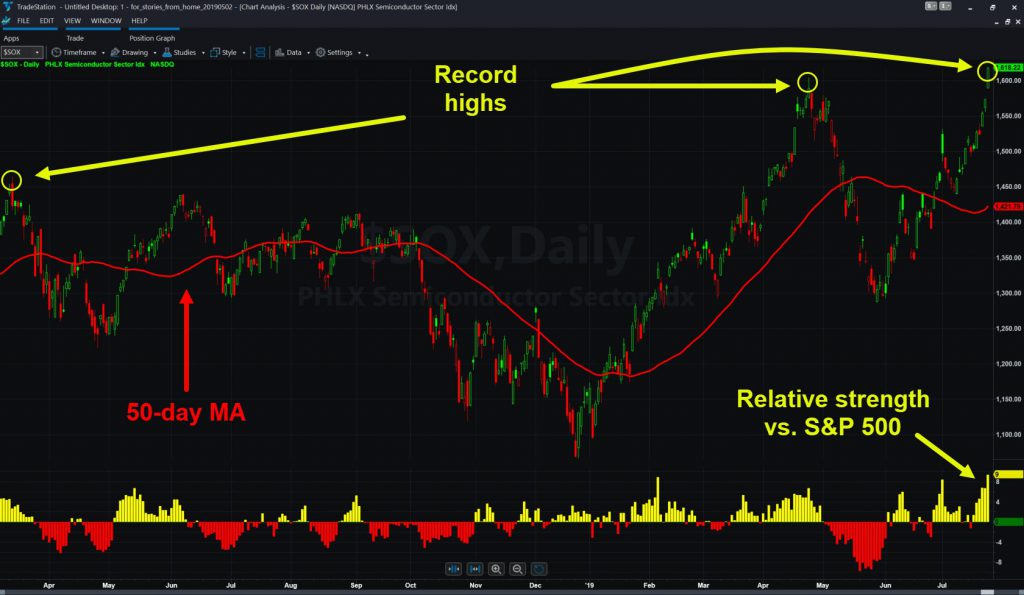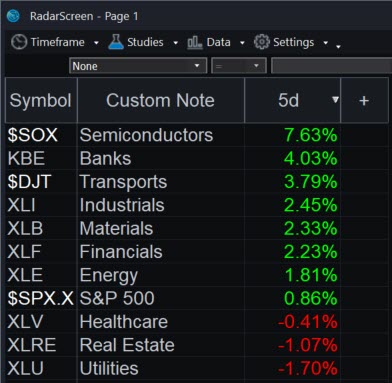Investors are favoring riskier parts of the market as the S&P 500 tries to break out to new highs.
Semiconductors, industrials, banks, energy and materials have each gained at least 2 percent in the last week, according to RadarScreen®. Those sectors are highly cyclical, benefiting from stronger economic growth.
Meanwhile, “safe haven” industries like utilities, healthcare and real-estate investment trusts have lost value.
Earnings are part of the story. Quarterly reports from chip stocks have suggested an uptick in orders and new growth opportunities in 5G networking. That’s helping lift the Philadelphia Semiconductor Index ($SOX) to a new record high today.

Industrials have been essentially bullish as blue chips like Honeywell (HON) and United Technologies (UTX) beat estimates. Two other big names — Boeing (BA) and Caterpillar (CAT) — fell on weak results, but those are because of one-off issues. BA is struggling with the 737 MAX, while CAT faces its own unique cost pressures.
The other big driver for industrials has been strength in transportation stocks, especially airlines.
Have Interest Rates Bottomed?
There’s also the question of interest rates. They’ve been falling all year and everyone expects the Federal Reserve to cut rates at its meeting next week. But with other economic data still strong, the bigger question is whether that news is priced in.
Price action in utility stocks may suggest it is priced in. Because they’re valued by their dividends, they tend to rise in price when bond yields fall. (TradeStation’s correlation indicator confirms this historical relationship, showing a consistently negative relationship between utilities and 10-year Treasury yields.)
On the flip side, stocks like industrials and financials tend just the opposite. They tend to rise along with interest rates.

Some important news events in the next two weeks could have a big impact on interest rates as well:
- Friday, July 26: Gross domestic product for the second quarter.
- Wednesday, July 31: Fed meeting and press conference.
- Friday, Aug. 2: Non-farm payrolls report for July
Indexes Near Highs
Meanwhile, the major stock indexes are trying to move into new record territory. The S&P 500 broke 3,000 this month for the first time ever. The Dow Jones Industrial Average took out 27,000 and the Nasdaq-100 breached 7,900.
All three have held in tight ranges since, slightly above the old highs from last year. Fear gauges like Cboe’s Volatility Index ($VIX.X) and Nasdaq-100 Volatility Index ($VXN.X) are both pushing long-term lows. Where’s the anxiety?
In conclusion, the market’s barely moving as investors await earnings and some major economic reports. But a look deeper beneath the surface may suggest that confidence is growing and sellers are relatively few.



























